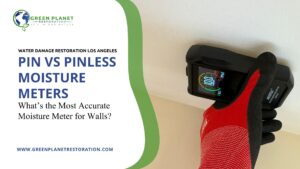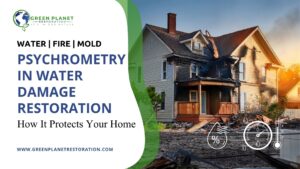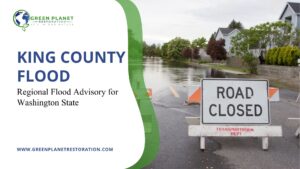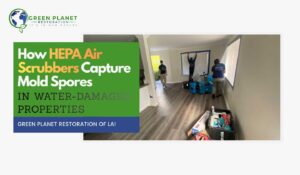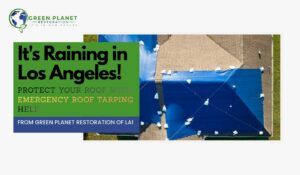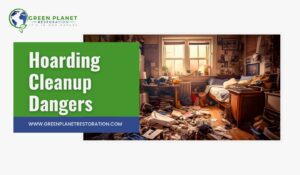There is a chance of mold growth in places where you feel moisture. Mold damages our properties badly and can also affect our health. If you see signs of mold growth in your office or home, then you must take the test first. Certified mold testing can accurately identify the type of mold present and determine the best course of action for removal. Today, we look into the various types of mold testing methods and have a clear understanding as to its testing process and damage repair.
What Is Mold Testing?
Mold testing basically is the process to test for mold; in this process, experts check the mold in your indoor space or in outdoor spaces. For real identification and to know its type, this test is taken. Experts collect the samples from the surfaces in your home and the air. These are all samples sent to a lab check.
But is it OK to live in a house with mold? Mold testing tells us how dangerous it might be to us in terms of health issues. If mold is found to be present in high levels, it can pose serious health risks, especially for those with respiratory issues or allergies. It is important to address any mold issues promptly to maintain a safe living environment. Conducting certified mold testing will help us assess whether our space is affected by mold growth or not.
Did sewage or floodwater soak into your drywall? Learn Why You Must Replace Sewage-Damaged Drywall And How to Do It
Types of Mold Testing Methods
Mold testing can be performed through three distinct methods. Different testing methods serve unique purposes for mold detection across various circumstances.
Air Testing
By using air testing, professionals check for mold spores that are present in the surrounding air. Testing becomes effective during situations where visual mold inspection reveals no mold presence while occupants exhibit symptoms of sneezing and coughing.
Equipment Used:
- Spore traps (e.g., Air-O-Cell cassettes): These devices capture airborne mold spores by drawing in air through a calibrated pump.
- Calibrated air sampling pumps (e.g., Zefon Bio-Pump Plus): Maintain consistent airflow for accurate sampling.
- HEPA-filtered vacuum samplers (for larger particulate sampling in commercial settings).
Compliance Regulations:
- EPA Guidelines (U.S. Environmental Protection Agency): While there is no national mold regulation, the EPA provides best practices for air sampling and indoor air quality.
- OSHA Standards (Occupational Safety and Health Administration): Applies to workplace exposure and mandates proper testing protocols to safeguard employees’ health.
- AIHA (American Industrial Hygiene Association): Recommends lab accreditation and proper spore trap handling techniques.
Surface Testing
Surface testing allows inspectors to detect mold growth that happens on household walls and furniture and other surfaces. Analysis through this method reveals information about specific molds present in the environment.
Equipment Used:
- Sterile swabs or wipes: For collecting mold samples from flat surfaces.
- Tape lifts or contact plates (e.g., agar plates): Provide a snapshot of surface contamination for lab culturing or microscopic analysis.
- Microscopes and staining agents: Used in laboratory analysis to determine mold species and concentration.
Compliance Regulations:
- NYS Department of Labor (New York State Mold Program): Requires surface testing to be conducted by licensed professionals in certain jurisdictions.
- AIHA Laboratory Accreditation: This makes sure that labs analyzing surface samples meet quality assurance standards.
- CDC Guidelines (Centers for Disease Control and Prevention): Recommend protocols for post-flood or water damage assessments.
Bulk Testing
Laboratories analyze mold presence by receiving bulk material examples, such as wallboard or carpet samples. The testing method applies to cases where extensive mold damage exists or when numerous large areas are involved.
Equipment Used:
- Sterile collection bags or containers: Prevent cross-contamination during transport.
- Utility knives or core samplers: For extracting material safely and effectively.
- Digital Moisture Meters: To assess the saturation level before and during sample collection.
Compliance Regulations:
- ASTM D7338-14 (Standard Guide for Assessment of Fungal Growth in Buildings): Governs mold inspection protocols, including bulk sampling.
- EPA’s Mold Remediation in Schools and Commercial Buildings: Cites bulk sampling for extensive damage assessments.
- Hazardous Waste Handling Rules: In extreme contamination, bulk materials may require disposal under state or federal environmental safety laws.
How Mold Testing Works – The Process
The mold testing process is so simple; in just a few steps, the test can be completed. Let’s see how mold testing works:
1. Checking for Signs of Mold
The test starts with a walk around your home. A professional team will visit first and take a look at all the signs of mold. All those areas will be checked by them where mold is rapidly growing. These areas included bathrooms, kitchens, basements, and other types of spaces. Experts also check all the water damage and leakage. Certified mold inspectors look for mold by smelling musty odors and seeing discolored areas.
2. Finding Moist Areas
Mold needs moisture to grow. Professional tools determine both the moisture content in the air and the walls and floors of a building. The examination method helps experts detect hidden water issues that allow mold to develop in wall cavities and under flooring materials.
3. Collecting Air Samples
The best way to confirm mold’s presence is through air sample collection. The air sampling process allows experts to measure the presence of mold spores suspended in the atmosphere. The testing method proves valuable for hidden mold situations when building occupants experience allergies and breathing difficulties.
4. Swabbing Surfaces for Mold
Swabbing procedures must be conducted on walls, tiles, and furniture items to obtain surface-based mold samples. The surface mold test determines both the mold varieties and their quantity. The method allows inspectors to identify mold growth that can be seen by the human eye.
5. Sending Samples to the Lab
The collected samples need to be transferred to a laboratory facility. The identification process for mold species requires lab experts along with microscopes and specialized tools. The lab experts determine both the severity level of harmfulness and the quantity of mold present in your living space.
6. Sharing the Results and Next Steps
A mold inspector will provide you with assessment results after sending the samples to the lab. The report contains information about the mold type discovered, along with step-by-step guidance for your next actions. Professional recommendations regarding mold removal and future prevention will be included in the report.
Learn more about: The Difference Between Professional Mold Testing, Mold Inspection, and DIY Mold Test Kits
The Role of Certified Mold Inspectors
Certified mold inspectors receive professional training to locate any hidden mold spots. Special equipment combined with safety protocols helps them perform their tests. The professional checks that the laboratory receives the samples in a manner that produces accurate outcomes.
Their main responsibility involves providing honest recommendations regarding potential mold remediation procedures. Using certified mold testing methods will help you find and solve mold issues through appropriate methods.
Hiring a Certified Mold Inspector
Home safety depends heavily on the practice of mold testing to protect families from health issues. Mold testing services detect mold infestations before mold becomes visible to the human eye. Certified mold inspectors, like Green Planet Restoration, combined with appropriate testing methods, will help you properly understand the problem so you can create effective solutions.
Worried about mold in your home? Don’t wait! Reach out to Green Planet Restoration today for mold testing without delay for secure assessments that protect your family’s health and safety.
______________________
Related Articles
Complete Guide to Crawl Space Maintenance and Cleanup
24 Hour Plumbing Emergency Guide
How LGR Dehumidifiers Prevent Secondary Damage
How Moisture Meters Prevent Mold Growth
Leaking Ice Makers: Why They Happen and How to Prevent Them
How To Handle Flood Damage in Southern California
Should I File an Insurance Claim for Water Damage?
8 Common Causes of Household Water Leaks and Water Damage
Psychrometry in Water Damage Restoration: How It Protects Your Home
Pin vs Pinless Moisture Meters: What’s the Most Accurate Moisture Meter for Walls?


